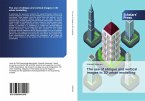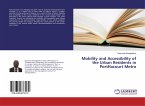Lane-changing studies have attracted increased attention during recent years. However, limited research has been conducted to address the probability of changing lanes and vehicle interactions that occur. The objective of this book is to model urban lane-changing maneuvers by using data related to driver behavior. Two components were developed from field data, for lane-changing probability and for gap acceptance. Experiments were conducted to collect the corresponding lanechanging data: a focus group study and an in-vehicle driving test. The proposed lane-changing model was implemented in the CORSIM microscopic simulator. Traffic data collected from a busy arterial street were used for model calibration and validation, and the simulation capabilities of the newly developed model were compared with the original lanechanging model embedded in CORSIM. Results indicate that the new model replicates observed traffic under different levels of congestion better than the original model does.
Bitte wählen Sie Ihr Anliegen aus.
Rechnungen
Retourenschein anfordern
Bestellstatus
Storno








